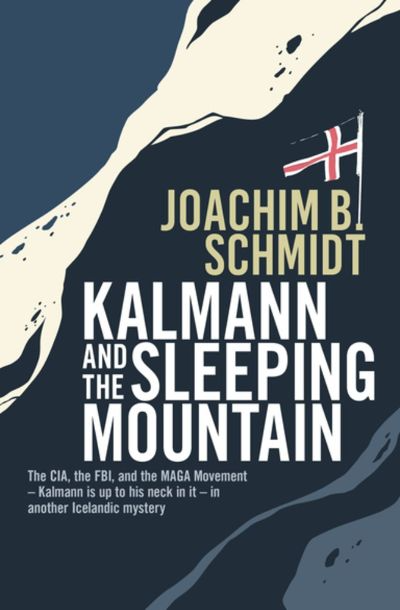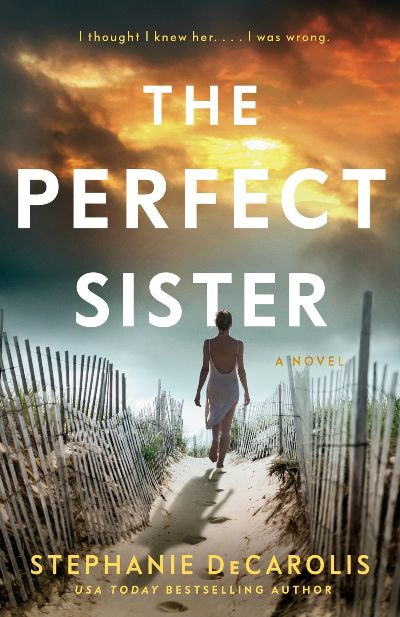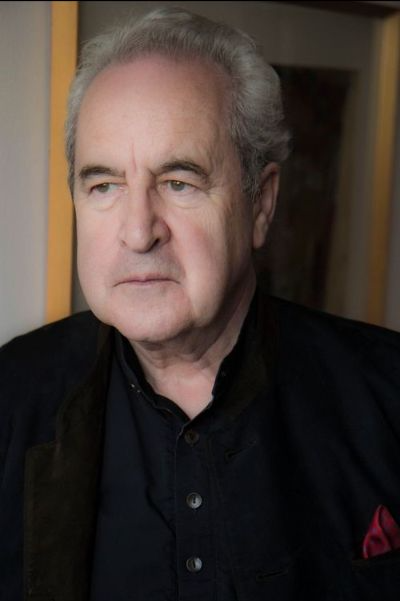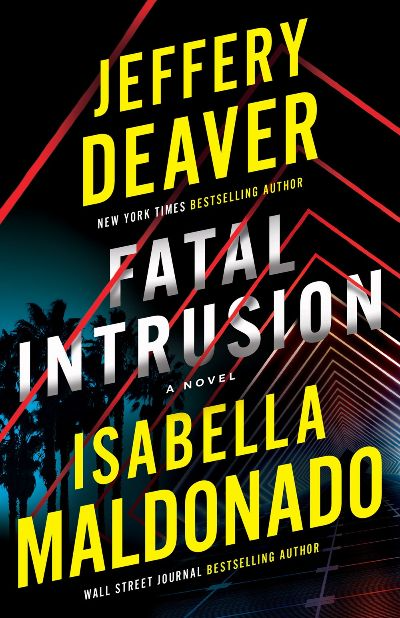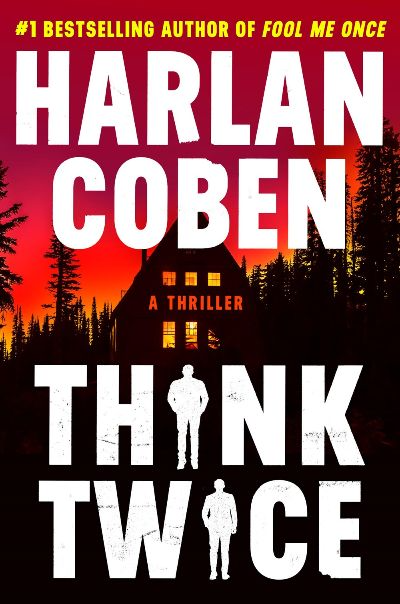In the first book in the series, Kalmann, we were introduced to our hero, a young man who’s neurodivergent—although he uses many terms to describe himself—and who works as the self-appointed sheriff of Raufarhöfn, a fishing village in northern Iceland. His world is contained—he lives with his mother, his best friend he sees only online—but his life is still fraught with dangers, from fishing on the Greenland Sea to encounters with polar bears. Kalmann remains well regarded in his village, and it is his sense of humor that often helps him survive. But in Kalmann and the Sleeping Mountain, we are stunned to find Kalmann in West Virginia, visiting his Dad, whom he has never met before, and getting swept up, along with his Dad and his MAGA buddies, in the January 6, 2021 riots in the Capitol Building. Incredible! While he is soon put on a plane back to Iceland by a kindly FBI agent, Kalmann’s world is changing. His beloved grandfather has recently died, and, Kalmann learns, he may well have been a Russian spy. Could he have been murdered in his nursing home? Another possible murder in the village, and a risky trip to an abandoned U.S. radar station with an aunt, forces Kalmann to rethink his family and village and his role in both. Both heart-rendering and hilarious, “there is no need to worry” as Kalmann famously declares. “Kalmann is in charge.”
Thrillers
This novel of small-town heartbreak, grittily emotional in a way that’s reminiscent of Dennis Lehane’s Mystic River, introduces the lovably flawed Grady family: Roman, his partner, Ashley; their son, Mason; Roman’s mom, Tara; and her partner, John. They all barely hold it together financially and every other way in their part-time Airbnb in upstate New York. The house needs extensive repairs, but who has the money? Instead they’re muddling along, with Tara mainly raising Mason and his parents resenting her takeover. Then Roman finds Ashley dead on the riverbank behind her drug-addict friend’s house. As word gets out that Ashley had a bag of pills in her pocket, everyone in town assumes it was an overdose. But Roman wants real answers, and his digging creates a realistic, relatable saga of poverty mixed with love and bad choices. All the characters here are memorable, but four-year-old Mason and his bottomless, bewildered grief are particularly well drawn. A family and a story to remember.
I love the kind of us-and-them stories set in places like the Hamptons, and the latest by DeCarolis (The Guilty Husband, Deadly Little Lies) is packed with twists. Alex and Maddie Walker are sisters who look so alike and are so close in age that people think they’re twins. Their mother referred to them that way, a glimpse of love amid her boozy, selfish ways. Now Mom’s long gone, and the sisters, who are now in their twenties, are distant after an argument that followed her funeral. But when Alex doesn’t hear from Maddie, who has been in the Hamptons for the summer, she heads to that tony town to get to the bottom of things. What she finds is very strange—Maddie had been living at one of the swankiest houses in the area, Blackwell Manor. Alex stays with the Blackwells herself, keeping a safe distance from their rich but miserable lives—until things take a turn when another young woman goes missing. As Alex becomes a thorn in the police’s side, she uncovers secrets about the present and the distant past. Dark sexual themes feature amid the absorbing suburban suspense that’s told from multiple, tantalizing viewpoints.
Hands down the creepiest book we’ve reviewed this year, if not in several years. Charlie and Eve are a gay couple who make their living buying and flipping old houses. Their current project is in the rural Pacific Northwest, far from their roots on the East Coast. A family drops by one afternoon
—Eve is all alone while Charlie is running errands—and the father says he grew up in the house and could he show the kids around? It takes a bit of cajoling, but Eve eventually gives in—huge mistake—because once they’re in the house, the weird and the worrisome begin to present themselves. The youngest daughter disappears. The basement is home to supernatural presences. Objects vanish. Charlie returns, although she doesn’t offer the support Eve needs. As the day goes on, it becomes clear that the family can’t leave—a winter storm has descended on them—but it gradually becomes even clearer that they have no intention of leaving. Crazily suspenseful, but a tad more horror than mystery, the story moves at a fast clip as the reader slips from one reality to another in this accomplished debut. To be released as a Netflix original film starring Blake Lively.
Spotting a sleek Mercedes SL sports car parked in a sloping field below a house, its engine still running and the driver’s door left open, Denton Wymes, on his way home from fishing, pauses to investigate. It’s a moment that the isolated loner will soon regret as he becomes caught up in a missing-person case that will turn his life upside down. Before Wymes can retreat, a man named Armitage approaches, claiming his wife has thrown herself into the sea. Together they walk up to the house to telephone for help. Armitage’s behavior is odd (“he seemed more excited than distressed’) and Wymes senses that the tenant answering the door, Charles Rudduck, recognizes Armitage. Called in from Dublin to investigate is Detective Inspector St. John (pronounced “Sinjun”) Strafford, who is also juggling a complicated personal life (an estranged wife and a lover who is the daughter of his colleague, state pathologist Quirke). In late 1950s Ireland, divorce is illegal, and Anglo-Irish social tensions remain strong. Banville deftly captures the prejudices and suspicions between the groups. “You’re not a Paddy, then” says Armitage to Wymes, who stiffly corrects him that he is Irish, but not “bog Irish.” In a mostly Catholic police force, Strafford stands out as the rare Protestant. His investigation gradually uncovers secrets that go back years and into previous series installments, but enough back information easily guides new readers through the complex plot. Banville ends his fourth Strafford/Quirke crime novel (after The Lock-Up) on a haunting, ambiguous note. With its complicated, not always likable protagonists, this beautifully written book will appeal to fans of literary mysteries in the vein of Kate Atkinson’s and Tana French’s works.
Two of my favorite writers have teamed up, and the pairing exceeds expectations. A nature photographer is killed, and a young woman named Selina narrowly avoids the same fate. Selina’s older sister, Carmen Sanchez, works for Homeland Security and wants answers. The attacker is methodical, ruthless, and seems to know every trick not to be seen or caught, though Selina did see he had a tattoo of a black widow spider on his wrist. With no motive and a heavily encrypted cell phone recovered at a crime scene, Carmen seeks the assistance of Professor Jake Heron, a teacher and security expert. Though they share a troubled past and probably should not be assisting each other, Carmen feels she has no alternative. Jake’s curiosity draws him directly into the case, and the reluctant duo is slowly drawn into the perpetrator’s web. This book reads like a great episode of Monk or Elementary, with law enforcement working closely with an expert consultant. Carmen and Jake have great chemistry, and the story reads like the best of Maldonado’s crime novels and Deaver’s thrillers. Fatal Intrusion is a must-read, and everyone will be dying for the next book.
Harry Hunt, former right hand to Robert Hooke, from whom he’s now estranged, is back in his third 17th-century London mystery, after The Bloodless Boy and The Poison Machine. He’s still immersed in a life of the mind and courting Hooke’’s daughter, Grace. Otherwise, though, his circumstances have changed markedly, with new prosperity sitting increasingly uncomfortably on him as events, and a surprising relationship, remind him where his roots lie. He’s also reminded from whence he came when the King takes him down a peg during an investigation (“Your use to me outweighs your impertinence”). The case starts when Harry attends the planned dissection of the corpse of a suicide from Bethlehem Hospital, the notorious insitution nicknamed Bedlam, which is halted quickly when Harry sees that the cadaver is that of no Bedlam pauper but his neighbor. How her body got to a hospital where she wasn’t a patient is a puzzle. Adding to the horror, another woman shortly goes missing and Harry is charged. He’s soon on the run, offering Lloyd the opportunity to show what London in 1681 was like outside its gilded halls and to keep readers on edge as the law and other malevolent forces close in. With its rich language, gory details of an era that was an attack on the senses, tidbits on Popish vs. Protestant politics, and shocking facts about early medical training, this is another immersive winner from Lloyd.
A wonderful addition to the literature of The Wizard of Oz, this novel focuses on 11-year-old Dorothy Gale, “dreamy, distant, difficult,” and her eventual return to Kansas via a pumpkin field, where she is found sleeping. Poor Dorothy didn’t know the drill—she was insistent on the reality of the fantastic land she had left, with “talking beasts, flying monkeys, and a wizard”—when she should have been accusing the Oz citizenry as being ungodly pagans. But it’s Dorothy’s admission that she murdered (actually melted) the witch, and the discovery that a leading, witch-like townswoman, Alvina, has also been murdered (melted by lye), that sends Dorothy off to the Topeka Insane Asylum. Fortunately for Dorothy, the town is visited by Dr. Evelyn Grace Wilford, a student of William James, who faces the misogyny and Christianity of the townspeople to learn the truth of what really happened to Dorothy Gale. A delight from start to finish.
Sports agent and former attorney Myron Bolitar works closely with his best friend, Win, in a lavish office in New York City. FBI agents visit one day and demand answers. One of Myron’s former clients, Greg Downing, is the prime suspect in a couple of murders, as his DNA was found under a victim’s fingernails. The only problem? Greg died three years ago, and Myron last saw him at his funeral. Myron and Greg had a history, and being curious how a dead man could murder someone, Myron asks Win for help, and they start digging for answers. Mobsters, false identities, and a string of murders committed by innocent people are only the tip of the iceberg in Coben’s latest. Myron and Win’s stories are personal favorites, and their relationship, banter, and puzzle-solving skills make for a great series. Think Twice is a classic story with a favorite duo and another great Coben thriller full of surprises and misdirection. Here’s hoping we meet these partners in action again soon.
Things couldn’t get much worse for Ellery. She’s all alone at a super-expensive resort in Big Sur where she and her husband were meant to celebrate their twentieth anniversary, except his mid-life crisis blossomed into a full blown decision to divorce (new girlfriend and motorcycle), and, well, the reservations aren’t refundable. Then it turns out that most of the other guests are there to celebrate a wedding. How annoying is that? Ellery misses her kids terribly. And when she decides to take an evening dip in the infinity pool, she finds the groom beat her to it, except he’s floating face down, fully dressed, with a huge gash in the back of his head. Time to call the cops, but a huge storm has moved through, triggering a mudslide that completely isolates the hotel, cutting off cell service. Yup, we are in a closed-resort novel. But, fortunately for Ellery, she makes some friends, and together they set out to investigate what’s really going on in this Christie-like setting. This is Condie’s adult debut (she is author of the YA “Matched” series) and she does a magnificent job of balancing the search for a murderer with exploring Ellery’s rich internal life. A gift to readers who enjoy closed environments and unsettling outcomes.

